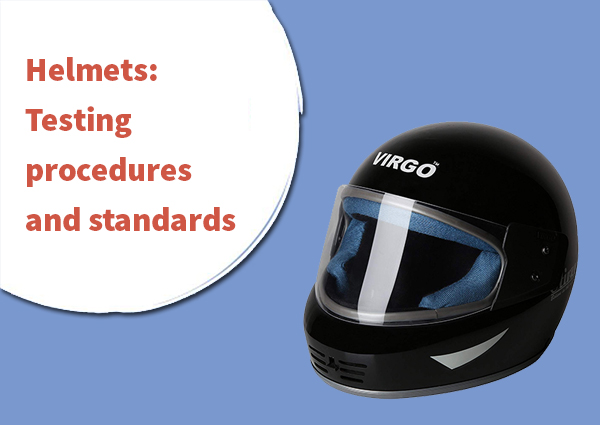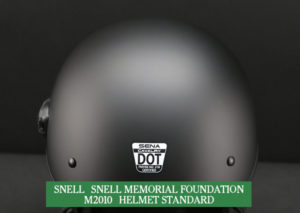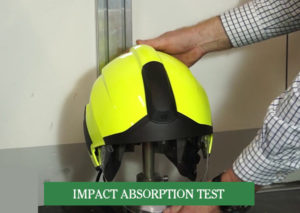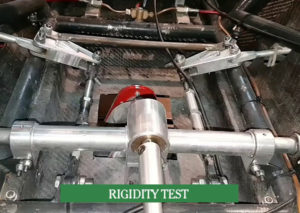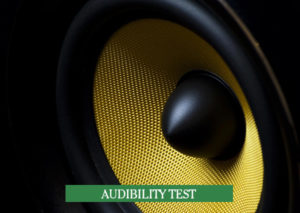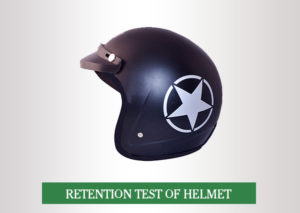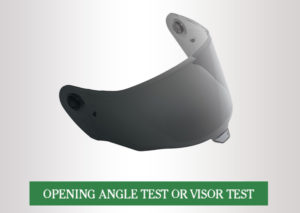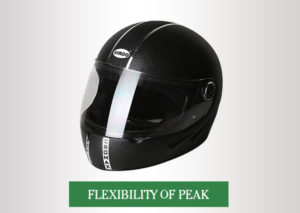Helmets: Testing Procedures and Standards
In the following article, we will be discussing the helmets testing procedures and standards. Indian Standard for Helmets Testing– Protective Helmets for Motorcycle or motorbike Riders – Specification. Prior to or previous to any type of further mechanical tests, each helmet shall be subjected to conditioning.
Types of Conditioning:
Solvent conditioning
Take a cotton cloth of approximately 150 mm square and a quantity approximately 25 ml of a solvent consisting of test liquid with 30 per cent and toluene 70 per cent octane. Using the cloth soaked in the solvent, apply the solvent to all those regions of the outside surface of the helmet shell within 50 mm of the chin strap fixings and keep these regions wet within the solvent for around 7.5 ± 2.5 seconds. Next repeat the whole procedure on the remainder of the external surface including any chin guard, keeping these regions wet for around 12.5 ± 2.5 seconds. No further testing or conditioning be done during the following 30 minutes.
Ambient (temperature and humidity) conditioning
The helmet shall be exposed to a relative humidity of about 65 ± 5 per cent and a temperature of about 25 ± 5°C for at least 4 hours in an oven.
Heat Conditioning
The helmet shall be exposed or open to a temperature of about 50 ± 2°C for not more than 6 hours and not less than 4 hours in dry heat.
Low-temperature Conditioning
The helmet shall be exposed or open to a temperature of about -20 ± 2°C for not more than 6 hours and not less than 4 hours in a cold chamber.
Ultraviolet-radiation conditioning and moisture conditioning – The outer surface of the protective helmet shall be exposed or open to ultraviolet radiation by a 125 watt xenon filled quartz lamp for around 48 hours at a range of about 25 cm subsequently spraying for around 4 to 6 hours with water at ambient temperature or room temperature at the rate of 1 liter per minute.
Snell (Snell Memorial Foundation M2010) Helmet Standard:
The Snell Memorial Foundation formed in 1957 is a non-profit, private organization dedicated to improving helmet safety. Snell goes beyond the governmental standard-setting approach and is available to assist or help manufacturers with helmet development by offering them prototype testing.
A helmet is tested in Snell’s state-of-the-art test facility before it can be certified by Snell. Snell professional technicians conduct a variety of tests to determine the helmet’s offers performance and ability to stay on the head in a lot of different environmental conditions – ambient, heat, cold, and wet. Depending on the standard and the application, each helmet must pass all if not, some of the following tests.
Testing Methods:
1. Impact Absorption Test:
The capacity of Impact absorption is determined or set on by recording against time the acceleration is given or imparted to a head form fitted with the helmet when dropped in guided free fall at a specified impact velocity upon a fixed steel anvil.
The first impact or effect shall be carried out within about 45 seconds of conditioning. All the subsequent or successive impacts shall be completed within not more than 5 minutes after subjecting to the conditions. The conditioned helmet tested shall meet the requirements, when the resultant acceleration measured at the centre of gravity of the head form shall be < 150 gn (where 1 gn = 9.81 m/sec2) for any 5 mille seconds continuously and at no time exceeds 300 in.
2. Resistance-to-Penetration Test
The protective helmet shall be placed or kept, with an initial load of 10 N, on a head form oriented or positioned in such a way that the plane tangential to the shell at the point selected for the test is substantially or significantly horizontal. A metal punch with a conical head rounded at the top shall be placed or positioned vertically to touch the shell at the point selected and held in position or spot by a ring. A metal drop hammer shall fall on the top of the punch, and the depth to which the point or spot penetrates into the shell shall be measured with an inertia-free device, for example- a photoelectric device, indicating or pointing out the minimum vertical distance reached in this test between the head form and the head of the punch.
The helmet shall be subjected to test at two Points within the area of protection at least 5 mm distant from each other and from any earlier or previous point of impact, after subjecting to the process of conditioning which has given the least, satisfactory results in the test of impact-absorption. Also during the test, the head of the punch shall not come closer than about 5 mm measured vertically to the head form.
3. Rigidity Test
The helmet shall be placed between two parallel plates by means of which a known load can be applied along the transverse axis or the longitudinal axis, after undergoing humidity conditioning and ambient-temperature. An initial or opening load of 30 N shall be applied, and after 2 min. the distance between the plates shall be measured. The load shall then be increased by 100 N every 2 min. to not more than or a maximum of 630 N the distance between the plates shall be measured, after two minutes of application of the 630 N load.
4. Dynamic Test of Retention System
The helmet shall be tested for their retention system more commonly known as the dynamic text and it shall meet the following requirements:
The dynamic displacement of the point of application of the force shall not exceed or pass 35 mm. After two minutes, the residual displacement of the point of application of the force, as measured under a mass of about 15 ± 0.5 kg shall not exceed or pass 25 mm. Damage to the retention system shall be taken or accepted provided that it is still possible to take the helmet easily off the head form and that the requirements are given in (a) and (b) above are met.
5. Audibility Test
Audibility test shall be carried out under the prevailing or triumph atmospheric conditions and the background noise level shall be such that the reading indicated or specified on the sound level meter by the noise is at least 10 dB below that of the horn sound level. This test shall be carried out or executed in an open space in which there is absolutely no obstacle within a radius of around 12 m and no nearby parallel walls or acoustical focusing effects.
The horn shall be mounted about 1.2 m above the ground and shall be fixed or secured in a rigid manner on a base whose mass shall be not less than 15 kg and at least 10 times than that of the horn and shall be adjustable up and down as well as sideways. The sound waves are emitted or produced from the horn by using suitable 12 V DC power supply and are directed or guided towards the rear of the head form at a distance of about 2 m. The two readings are taken with/without the helmet and the difference should be recorded to the nearest dB.
6. Retention Test of Helmet
The helmet previously or formerly conditioned at ambient temperature and humidity shall be secured to and placed on the appropriate head form.
A device to guide or direct and release a falling mass is hooked on to the rear part of the shell in the median vertical plane of the helmet. The falling mass is then released or undone and thus it drops in a guided or directed free fall from a height of about 0.50 m ± 0.01 m. The angle between the reference plane of the head form and the reference line situated on the crown of the helmet shall not exceed 30°.
7. Opening Angle test or Visor Test
The helmet, fitted with the visor being tested, shall be placed or positioned on a test head form of an appropriate size. When the visor is in the raised position, the angle between the horizontal shall and the secant MN be at least 5°, with the point M situated below the horizontal plane passing through point N.
8. Flexibility of Peak
The peak shall neither detach/separate from the helmet nor break. Its deflection or deviation shall be between 6 mm and 32 mm. The helmet shall be left on the head form used with a load of 120 N to hold it firmly in place. A mass carrier having a mass of about 114 g shall be suspended or hanged from the front edge of the peak at its center with a small hook and a light but strong thread passing over a pulley. The position or site of the pulley shall be adjusted so that the thread is perpendicular to the peak at its point of attachment or contact. A mass of about 1 kg shall be placed gently on the carrier and left for around 2 minutes, after which the resulting movement shall be measured with an index attached to the thread below the pulley and moving over a secured vertical scale.

